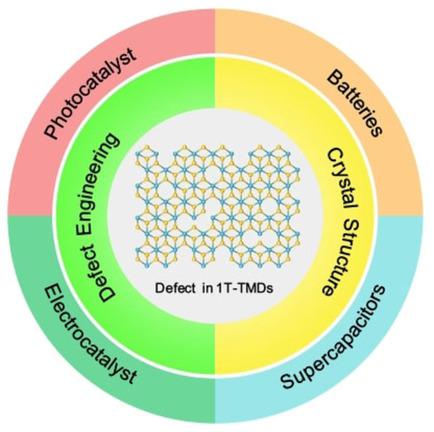当前位置:
X-MOL 学术
›
Chem. Asian J.
›
论文详情
Our official English website, www.x-mol.net, welcomes your
feedback! (Note: you will need to create a separate account there.)
Defect Engineering in Metastable Phases of Transition-Metal Dichalcogenides for Electrochemical Applications.
Chemistry - An Asian Journal ( IF 3.5 ) Pub Date : 2020-08-31 , DOI: 10.1002/asia.202000883 Ran Wang 1 , Jiecai Han 1 , Bo Yang 2 , Xianjie Wang 3 , Xinghong Zhang 1 , Bo Song 1
Chemistry - An Asian Journal ( IF 3.5 ) Pub Date : 2020-08-31 , DOI: 10.1002/asia.202000883 Ran Wang 1 , Jiecai Han 1 , Bo Yang 2 , Xianjie Wang 3 , Xinghong Zhang 1 , Bo Song 1
Affiliation

|
Metastable metallic phases of transition‐metal dichalcogenide (TMD) nanomaterials have displayed excellent performance and emerged as promising candidates for sustainable energy sources low‐cost storage and conversion because of their two‐dimensional (2D) layered structures and extraordinary physicochemical properties. In order to broaden the range of potential applications, defect engineering is applied to the metastable phases of TMDs for further improvement of their catalytic and electronic properties. According to some recent studies, effective introduction of defects without perturbing the interior conductivity contributes to the development of metastable TMDs. This review provides deep insights into recent progress in electrochemistry using defect engineering in the metastable phases of TMDs. After introducing the structures of metastable phases and methods for defect construction, significant developments in catalysis and energy storage applications are discussed to elucidate structure‐function relationships. Key challenges and future directions for defect engineering in the metastable phases of TMDs are also highlighted in the conclusions.
中文翻译:

用于电化学应用的过渡金属二硫属化物亚稳相的缺陷工程。
过渡金属二硫化氢(TMD)纳米材料的亚稳金属相具有出色的性能,并因其二维(2D)分层结构和非凡的理化特性而成为可持续能源低成本存储和转化的有希望的候选者。为了拓宽潜在应用范围,将缺陷工程技术应用于TMD的亚稳相,以进一步改善其催化和电子性能。根据最近的一些研究,在不干扰内部导电性的情况下有效引入缺陷有助于亚稳TMD的发展。这篇综述提供了对在TMD的亚稳相中使用缺陷工程的电化学最新进展的深刻见解。在介绍了亚稳相的结构和缺陷构建方法后,讨论了催化和能量存储应用的重大进展,以阐明结构与功能的关系。结论中还强调了在TMD亚稳态阶段缺陷工程的关键挑战和未来方向。
更新日期:2020-08-31
中文翻译:

用于电化学应用的过渡金属二硫属化物亚稳相的缺陷工程。
过渡金属二硫化氢(TMD)纳米材料的亚稳金属相具有出色的性能,并因其二维(2D)分层结构和非凡的理化特性而成为可持续能源低成本存储和转化的有希望的候选者。为了拓宽潜在应用范围,将缺陷工程技术应用于TMD的亚稳相,以进一步改善其催化和电子性能。根据最近的一些研究,在不干扰内部导电性的情况下有效引入缺陷有助于亚稳TMD的发展。这篇综述提供了对在TMD的亚稳相中使用缺陷工程的电化学最新进展的深刻见解。在介绍了亚稳相的结构和缺陷构建方法后,讨论了催化和能量存储应用的重大进展,以阐明结构与功能的关系。结论中还强调了在TMD亚稳态阶段缺陷工程的关键挑战和未来方向。











































 京公网安备 11010802027423号
京公网安备 11010802027423号